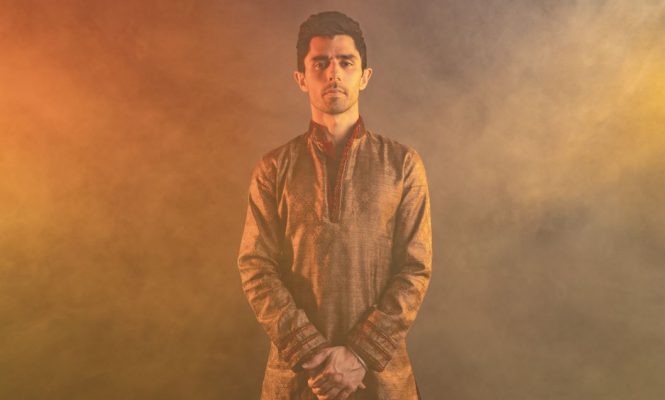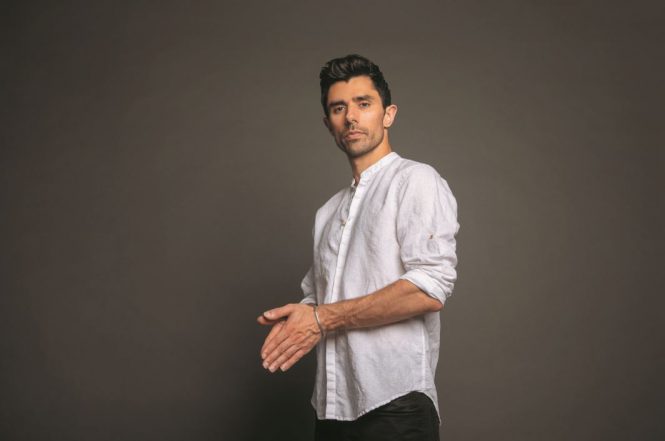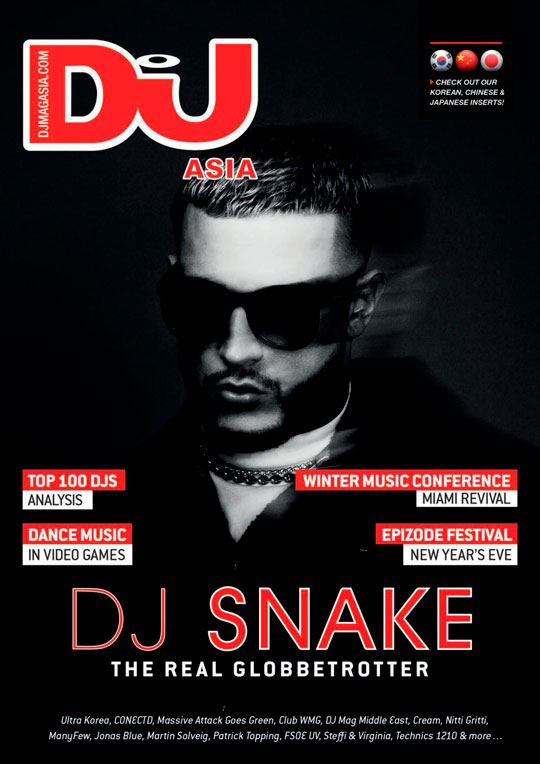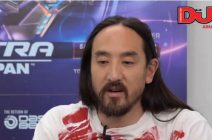Features

CHANGE IS THE ONLY CONSTANT
We chatted with Indian-American artist KSHMR about the great moment he’s living and the constant need for freshness in his sounds.
Words: Hernán Pandelo
‘I’m willing to settle down again and work on new music,’ says KSHMR from his home in Los Angeles, when we ask him what he’s up to. He has been travelling the world throughout 2018 and needs to feel comfortable at home for inspiration to strike.
The past year had everything: shows with new ideas, amazing new music and a few not so good news: “One of my favourite shows was Parookaville, where I got to premiere the new animated part of my show alongside live musicians. I was really proud of the release of ‘Carry Me Home’, it’s one of my favourite songs that sounds great in my sets. And, probably, the worst thing of the year was losing my grandpa.”
Niles Hollowell-Dhar has been KSHMR for years, and it seems this is not going to change, although his sound will – or at least he will try. “I find myself wanting to discover a new sound and make a body of music that feels fresh to me vis-a-vis what I’ve been making before”, he explains. This probing attitude is what has led him to work with heavyweights and tour the world.
Looks like you’ve been surfing the whole expansion of the EDM and now this is settling and you area now considered one of the big names still producing this sound… Is this something you have experienced? How do you see the present of dance music now?
“I think that the type of dance music that has been exciting to me over the years is the kind that reaches the highest peak of energy and you find that in big room and progressive house and hardstyle. It doesn’t mean that I don’t like other genres but that’s always been my favorite and it’s hard for me to not want to return to that when I’m working in the studio. The reaction I see in the crowd and the reaction I had as a fan of dance music has been what drives me in creating that sound.”
Regarding your work, you’ve released “Magic” a couple of months ago with what seems to be a return to your “old sound”… Is this so? Is there an “old KSHMR”?
“I think if you ask people who listen to my music there is an old KSHMR. The new KSHMR music is sometimes less homogeneous because I have to try different things to stay excited.”
This was released on DHARMA, a place that seems to be growing not only with your releases but also with some of your colleagues delivering nice songs on there… What’s your focus for this platform?
“Dharma is a label where I want to give a platform to songs I am a fan of and I think deserve recognition. The other facet of Dharma, which is very important to me, is to be a learning resource for producers, to offer them sound packs, tutorials, and templates which enable the next generation to thrive and this will soon be available on the Dharma website.”
How important is for you to be able to release your music as you want?
“It’s important to me to have a team that is supportive when I try new things and Spinnin, specifically Jorn Heringa, has been just that. He encourages me to find my next sound and experiment with merging dance music and other genres. I think you have to or it starts to feel that you’re imitating and old version of yourself and you get bored.”
“As soon as that feels like an obligation, I want to do it less.”
You’re very attached to the Middle East and ethnic sounds. How important is for you to keep that sound on the whole KSHMR brand? Is this something planned?
“Well, my Indian heritage is very important to my identity but it doesn’t necessarily mean I’ll use Indian instruments in every song. As soon as that feels like an obligation, I want to do it less. But I will continue to do it, not as something compulsory, but as a way to include instruments not just from India but from all around the world.”
How much can you plan in terms of following a path on your career? After this success… it’s easier or harder?
“I think it is harder and I’ll tell you why. In the beginning, you can fail as much as you want. Nobody will notice until you find your sound and you connect with people and then you’ll have a light shined on you where people analyze and critique your work. You have to be prepared for that and you will inevitably struggle to live up to people’s first impression of you. There are so many failures before and artists succeeds that no one sees or holds against them. It’s not until you find success that you must maintain a sturdy consistency or people begin to write you off completely and that’s hard to return from.”
Which unexplored places you’d like to explore music wise?
“I would really like to explore making music that is listenable on a day to day basis that can also work live. I have found that with much of my music, I love playing it but I wouldn’t listen to it driving in my car. There are exceptions to this, like my EPs ‘Lion Across The Field’ and ‘Paradesi’ but I find that it difficult to play those tracks live and maybe that’s just lack of courage.”
And what do you want for DHARMA in the future? Is this also part of your development as an artist? How involved are you in there?
“Dharma is completely separate from my artist project. The aesthetic that I’ve been very in control of for KSHMR, I am willing to let go for Dharma and allow it to be a more malleable platform that suits the aesthetic of the artists who release on it. For the future of Dharma, more than a label, I want it to be a resource for young producers to learn and to find the tools to make better songs. I think there’s no better way to learn then to pick apart songs you actually admire and one of the components of Dharma will be revealing the DNA of the songs it releases.”
This development leaded you to know lots of places around the world and, of course, a lot about Asia… How do you see this market?
“Asia is a market that for DJs emerged with blistering speed over the last few years. Me and many DJs I know, find ourselves often in Asia. For me, it has become like a second home. I’m not quite sure why they’ve taken a liking to me. Sometimes I suspect it’s that the sounds from India that are interwoven with my music have found appeal in other countries, like China, Japan, and Korea. I’m very thankful for this regardless of the reasons because I’ve found so many new friends and fans by spending time in these countries.”
Even though you’ve been raised in California, how attached do you feel to these lands taking in account your origins?
“I feel very attached to India in particular because of my family there, my visits throughout my childhood, and because how pivotal my experiences in India were in shaping who I am. A lot of who I am comes from my father who was born in Kashmir and even more of a potent influence is my grandfather. He was brutal in his honesty and imparted on me what I’ve come to live by, not allowing me to take it easy on myself and always holding a magnifying glass to the decisions I make.”
Do you think is important for the people that you are linked to their past?
“I think so. I think I find a special connection with younger people in India because they are very familiar with western culture and that is a part of who they are as well. To marry the culture of India and other influences is the truest representation of young people in India or with Indian heritage today in my opinion.”

Let’s talk about your beginnings…
What music did you listened back at home?
“Growing up I was obsessed with rap music. I found myself more interested in dance music when I got into college but throughout all of that, my real inspiration stems from the classics like The Beatles, Bruce Springsteen, Queen, and Frank Sinatra. Those are the artists that through my different phases of genre appreciation have stuck with me.”
What can you say about The Cataracs? Was this your first approach to commercial music? How did that started? Do you remember why did you started working on music?
“The Cataracs happened in high school. Me and my friend David wanted to make hip hop music that had elements of dance and pop. That really all came to a head when we moved to Los Angeles and made the song ‘Like A G6’ that I produced and wrote. Together, with Far East Movement and Dev, we created something that was very special to us but also transformed our dynamic. We became expected to recreate the success of G6 time and time again and began to realize our original chemistry of two lovers of hip hop faded. That’s why we disbanded and I created KSHMR.”
What were you doing before starting producing music?
“I went to college at San Francisco state for a year and then I dropped out to pursue music and got a job bussing tables at a Mexican restaurant and tutoring kids in the bay area.”
“I started KSHMR with the intent of creating something more personal.”
How was the process until you started the KSHMR project in 2014? You were already working with big names on the business… Why did you make that move?
“I was making pop music before I started KSHMR. I found some success, I did work with some big names but in the end it wasn’t fulfilling and that’s why I started KSHMR with the intent of creating something more personal. “
When did you realized it was a good move?
“From the beginning, it felt like a good move because I was suddenly in control of every aspect of my artistry. It’s a sword that you live and die by when you chose to be an artist as opposed to writing and producing for other people. Ultimately for who I am, it was the right choice. Of course, there were also moments like Tiesto collaborating with me on ‘Secrets’ that really changed my life and affirmed that I made the right decision.”
What was the best about those days?
“In the beginning everything was experimentation. I had an idea in my head of what the music would sound like, what my show would look like, but it was all abstract and I didn’t yet have anything material to show for it. It was a really exciting time to take the idea of KSHMR and create the actual ingredients and learn a lot in the process.”
What do you have in mind for 2019? Seems like a lot of work in the studio is being done? Maybe an album is going to pop up from there?
“I am taking a couple months from touring to be in the studio and finish up some singles. I’d like to put out an EP at least to offer my fans something besides the usual EDM bangers.”
How would you see yourself in 5 years?
“Touring can be tough and I’m often surprised that guys older than me are still doing it. I think I want to keep pursuing the creation of sound packs and educational material to help the next generation of producers but I don’t think I’ll ever stop making music. It’s my favorite thing to do and where I feel most at home.”
RECUADROS:
KSHMR’s own Top 5
in no particular order…
JAMMU
JUNGLE WHISTLE
DADIMA
WILDCARD
SECRETS
ASIA
I love coming to India because it was a big part of my childhood and who I am. I also love going to Japan because Tokyo is a city that will leave even an experienced traveler breathless.
April 15th, 2019








